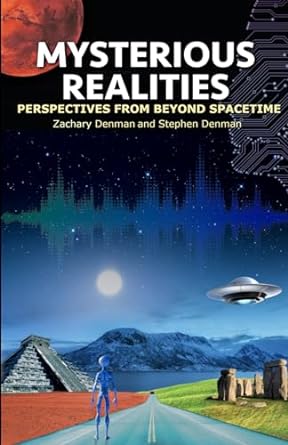Magnetism
600 BC – 1600 AD
Aristotle (384-322 BC) attributed the first scientific discussion of magnetism to Thales of Miletus, who lived from about 625 BC to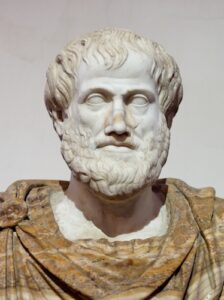 about 545 BC. Around 600 BC Thales of Miletus observed the attracting properties of amber. Once it was rubbed with fur, the amber developed the ability to attract light objects such as feathers. In De Rerum Natura, Book VI, verse 1085 of the poetical dissertation by Lucretius (99-55 BC), he writes:
about 545 BC. Around 600 BC Thales of Miletus observed the attracting properties of amber. Once it was rubbed with fur, the amber developed the ability to attract light objects such as feathers. In De Rerum Natura, Book VI, verse 1085 of the poetical dissertation by Lucretius (99-55 BC), he writes:
Its viewless, potent virtues men surprise ;
Its strange effects, they view with wond’ring eyes
When without aid of hinges, links or springs
A pendant chain we hold of steely rings
Dropt from the stone – the stone the binding source –
Ring cleaves to ring and owns magentic force :
Those held above, the ones below maintain,
Circle ‘neath circle downward draws in vain
Whilst free in air disports the oscillating chain
 The Chinese invented the Compass
The Chinese invented the Compass
The Chinese are credited with the invention of the compass, with evidence dating back to the 2nd century BC during the Han dynasty (202 BC – 220 AD). Initially, the compass was used for fortune-telling and geomancy (a form of divination), rather than navigation. Over time the Chinese refined their compass design, replacing magnetite (lodestone) with iron and adding a directional indicator. By the 11th century AD, the magnetic compass had become a navigational tool, used by Chinese mariners and explorers. It later spread to Europe and the Islamic world in the 13th century.
Although the Chinese invented the compass, the Gallic Peter Peregrinus de Maricourt, a contemporary of Roger Bacon, was credited for this invention in Western science. He conducted experiments and described methods for investigating magnetism in his treatise, Epistola de magnete (1269). He showed insight on magnetic attraction and repulsion, and described building compasses, one of which he claimed could be used to direct steps to cities, islands and any place in the world. De Maricourt worked as a military engineer with expertise in fortification and as a crusader for Charles (duke of Anjou and king of Sicily) who in 1269 laid siege to the city of Lucera.
Electricus, which is known as Electrophorus electricus (Electric Eel )
In the year 1600 a new Neo-Latin word was invented: electricus. The Neo-Latin adjective “electricus” was derived from the Latin word “electrum”, meaning “amber”. This Latin term is itself borrowed from the Greek word “ἤλεκτρον” (ēlektron), also meaning “amber”. The Greek origin of “ἤλεκτρον” is unknown, but there is speculation that it might have come from the Phoenician word “elēkrŏn”, meaning “shining light”. Click here to Join Members
De Magnete – William Gilbert (1544-1603)
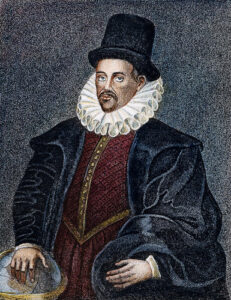 “De Magnete, Magneticisque Corporibus, et de Magno Magnete Tellure” (On the Magnet, Magnetic Bodies, and the Great Magnet of the Earth), in short: De Magnete was the treatise the word electricus made its appearance in. De Magenete is a seminal work that revolutionized the understanding of magnetism and electricity. William Gilbert (also: Gilberd) was the author. Gilbert is often regarded as the father of electrical engineering or electricity and magnetism, and his work continues to be studied and appreciated by scholars and scientists today.
“De Magnete, Magneticisque Corporibus, et de Magno Magnete Tellure” (On the Magnet, Magnetic Bodies, and the Great Magnet of the Earth), in short: De Magnete was the treatise the word electricus made its appearance in. De Magenete is a seminal work that revolutionized the understanding of magnetism and electricity. William Gilbert (also: Gilberd) was the author. Gilbert is often regarded as the father of electrical engineering or electricity and magnetism, and his work continues to be studied and appreciated by scholars and scientists today.
Gilbert conducted extensive experiments with lodestones (magnetic iron ore) and terrellas (model Earths) to demonstrate the properties of magnetism. He described the attractive power of magnets, their use in navigation, and the orientation of magnets towards the poles. This analogy led him to propose that the Earth is a giant magnet, with magnetic lines of force emanating from its core. This concept laid the foundation for later developments in geophysics and electromagnetism.
Gilbert’s work explored electrical attractions, thus introducing the term “electric” into the scientific lexicon. He described the triboelectric effect (static electricity generated by friction as demonstrated by rubbing the amber with fur) and recognized the distinction between static electricity and magnetism.
Gilbert discovered that a heated body lost electricity, and that moisture prevented the electrification of all bodies. He also discovered electrified substances to attract all other substances with impossibility, while a magnet attracted only iron. Magnetism does become damaged and weakened with heat.
Magnetism in living organisms
While Gilbert’s primary focus was on magnetism in natural bodies, he also explored the concept of magnetism in living organisms, including the human body. Gilbert proposed that the human body, like other living creatures, possesses a subtle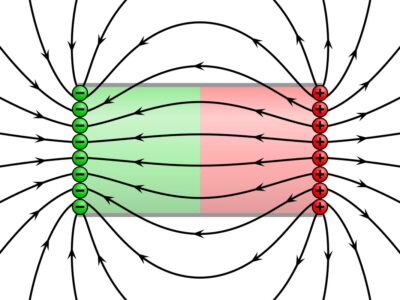 magnetic virtue or property. He believed that this magnetism was responsible for various bodily functions, including:
magnetic virtue or property. He believed that this magnetism was responsible for various bodily functions, including:
- Blood circulation: Gilbert suggested that the heart’s contractions and relaxations generated a magnetic force that helped propel blood through the circulatory system.
- Muscle movement: he proposed that muscles, when contracting and relaxing, produced magnetic forces that contributed to their movements.
- Sensory perception: Gilbert hypothesized that the human senses, such as touch and vision, relied on magnetic forces to transmit information from the environment to the brain.
Earth’s magnetic field as a guiding system
Researchers in Japan have made the first observations of biological magnetoreception — live, unaltered cells responding to a magnetic field in real time. This discovery is a crucial step in understanding how animals from birds to butterflies navigate using Earth’s magnetic field and addressing the question of whether weak electromagnetic fields in our environment might affect human health. “The joyous thing about this research is to see that the relationship between the spins of two individual electrons can have a major effect on biology,” said Professor Jonathan Woodward from the University of Tokyo, who conducted the research with doctoral student Noboru Ikeya. Earth’s magnetic field, also called the geomagnetic field, influences animal behavior by affecting chemical reactions. When some molecules are excited by light, an electron can jump from one molecule to another and create two molecules with single electrons, known as a radical pair. The single electrons can exist in one of two different spin states. If the two radicals have the same electron spin, their subsequent chemical reactions are slow, while radical pairs with opposite electron spins can react faster. Magnetic fields can influence electron spin states and thus directly influence chemical reactions involving radical pairs. Noboru Ikeya and Jonathan Woodward have shown that a magnetic field causes chemical changes that can affect cellular behaviour. They achieved this with the aid of a cellular chemical called flavin (which is in most vegetables and fruits) that fluoresces depending on the external magnetic field. When they waved a magnet near cells, the chemical dimmed by up to 3.5 per cent.
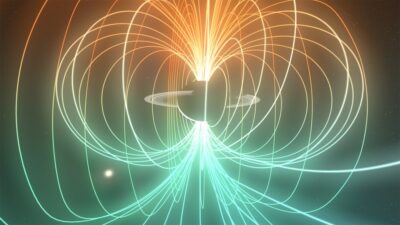
We create weak magnetic fields and absorb all sorts of radiation
When you rub your feet on the carpet, you “scrape off” electrons from the carpet fibers, leaving them positively charged. Your own body, being a conductor, becomes negatively charged as it absorbs these electrons. This creates an imbalance of electrical charges, resulting in static electricity. Try this before kissing someone, and you’ll both experience an electrified kiss. You have to be quick though, magnetic mother Earth absorbs your build-up of negative charges and your body absorbs them as well. Your body’s conductive pathways cause movement of electrons through nerve fibers and blood vessels, allowing them to ‘dissipate’.
The process of rubbing feet on carpet is similar to the way clouds generate electricity through friction between particles at high speeds. In both cases, the friction generates a buildup of electrical charges, which are then discharged or neutralized.
We are electric beings so we create a magnetic field around us, we can also refer to it as an aura. Magnetic fields are generated by direct current which is natural current. Electromotive force is an alternating current that Is impacting us, our magnetic field, our auras. When the alternating current hits us, it’s creating a higher voltage potential on the human body than the body is able to produce internally with direct current. So when that happens this external invisible electromotive force is superimposing itself upon the bodies own dynamic electrical system. Which one is going to win? The stronger one.
The average voltage of the human body (our bodies do not have single, uniform voltage like a battery or electrical circuit) is around 70 millivolts (mV), which is equivalent to 0.07 volts. This value is referred to as the resting membrane potential, which is necessary for proper functioning of the body’s cells.
Now imagine you’re working on your laptop. An average laptop typically rquires a power supply voltage of around 19 volts. That’s 271 times the average voltage of your body! Laptops are designed for close contact with the user’s body, often placed on the lap or near the abdomen. Laptops in fact emit a range of frequencies, including extremely low frequency (ELF) and radiofrequency (RF) radiation, in general: electromagnetic field radiation, a non-ionizing form of radiation, which can be harmful for all human beings and especially for pregnant women and their fetuses. When our own internal electrical circuitry cannot function properly, we will get thyroid issues, or headaches, insomnia, reproductive issues or emotional imbalance.
Be aware of your invisible body, how susceptible it is to radiation and magnetic fields. Ground yourself, bare feet on the ground. Enjoy your fruits and veggies. Drink herbal tea to help your body reduce oxidative stress. And turn your laptop into a desktop.



